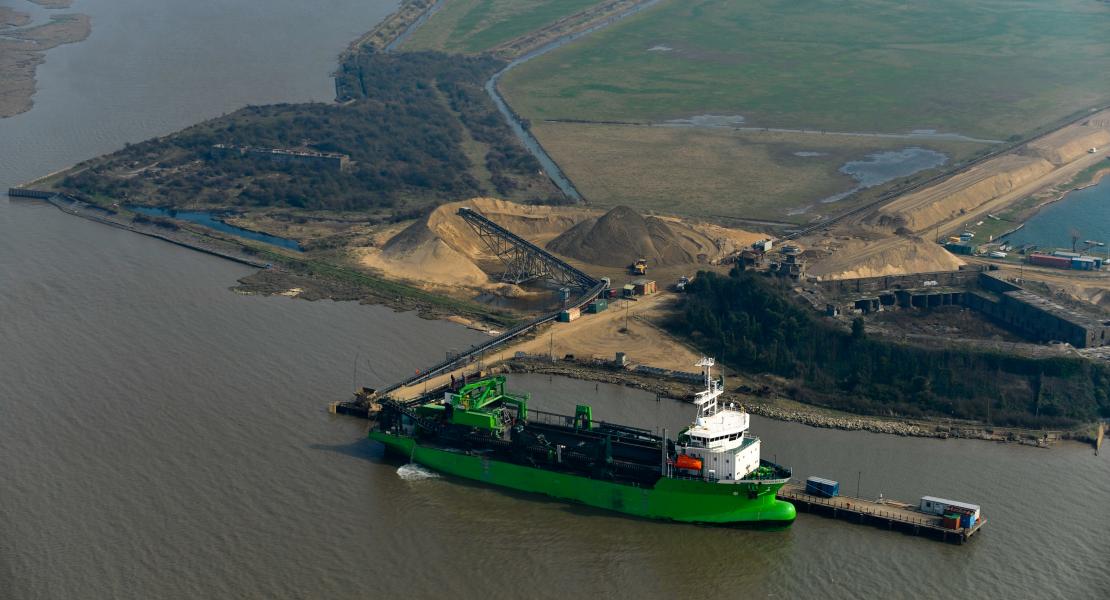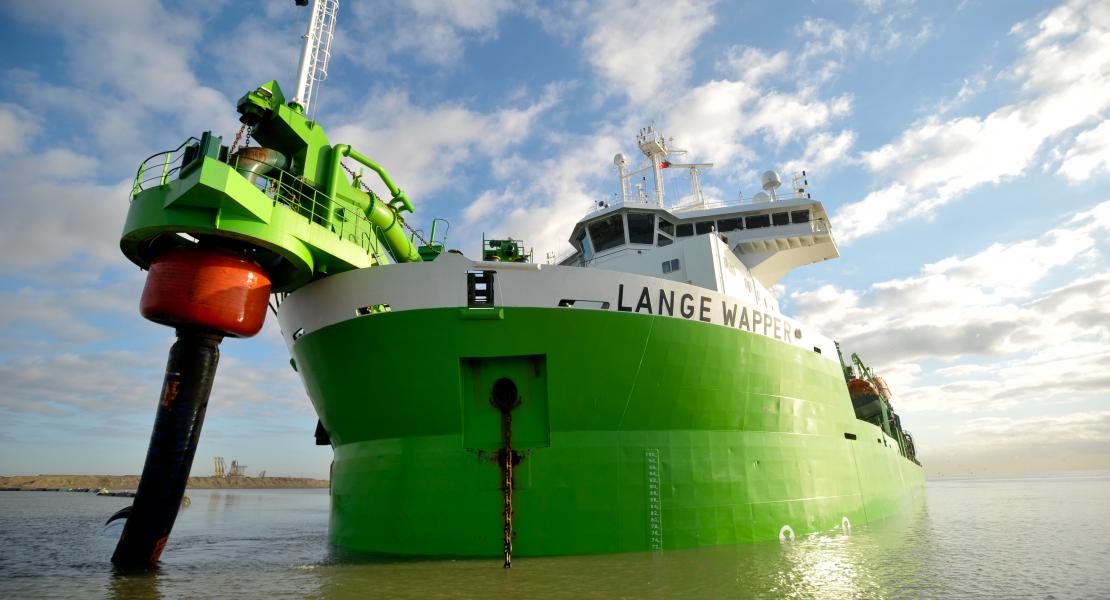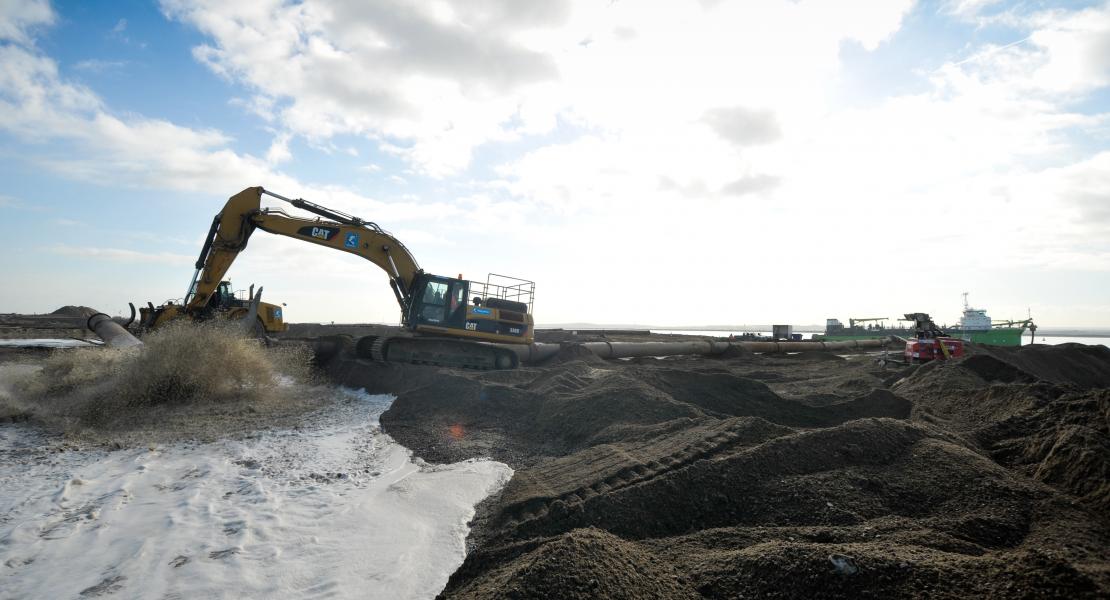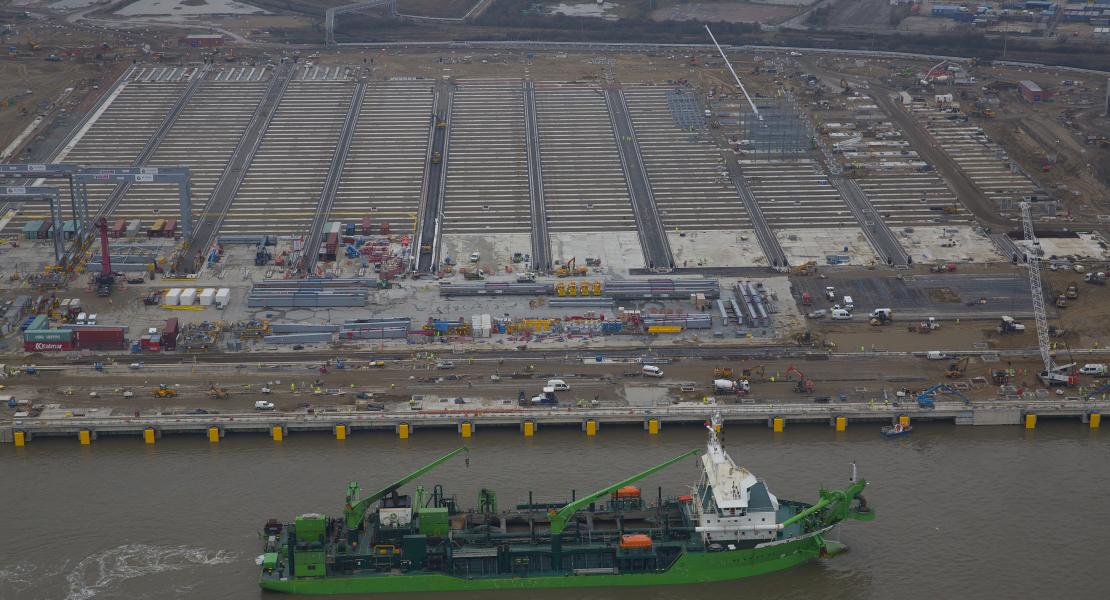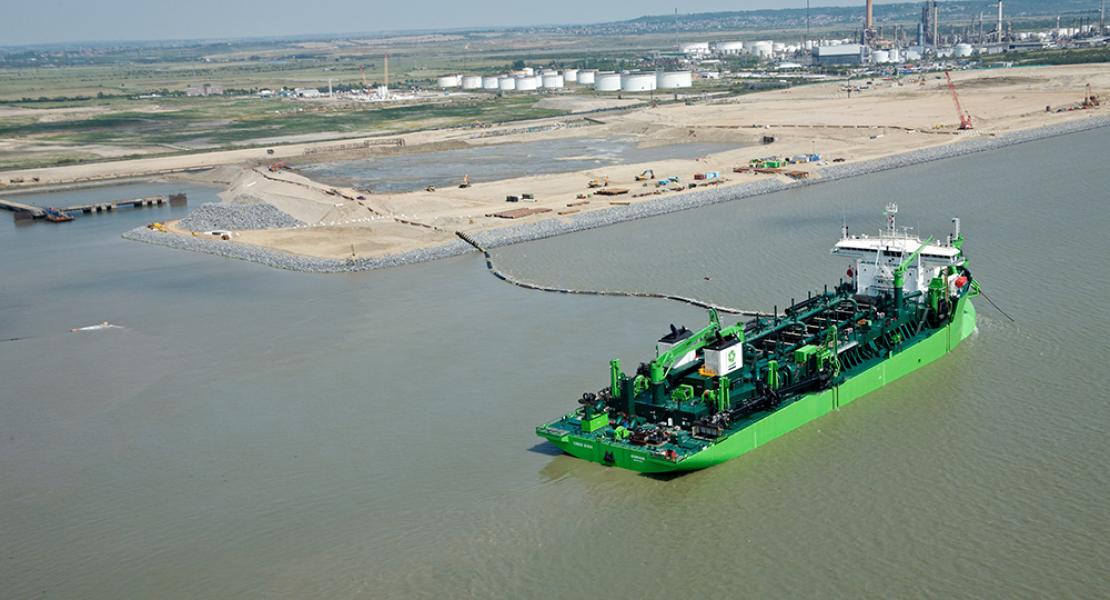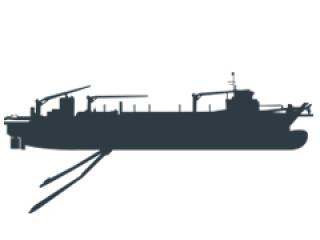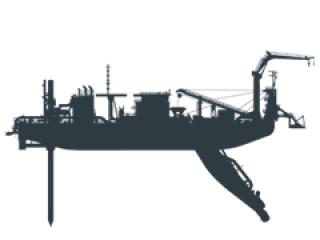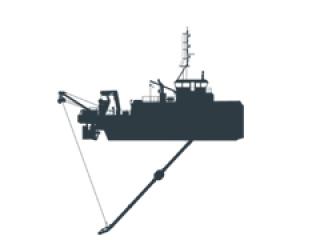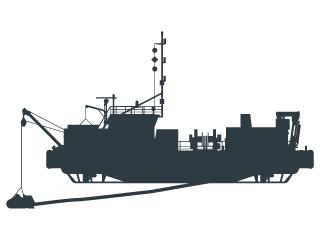London Gateway Port is a new, state-of-the-art, fully automated deep-water container port, located at the former Shell Haven installations downstream of the City of London. Construction works had to be completed in a period of 60 months and were executed in two consecutive phases.
What we do
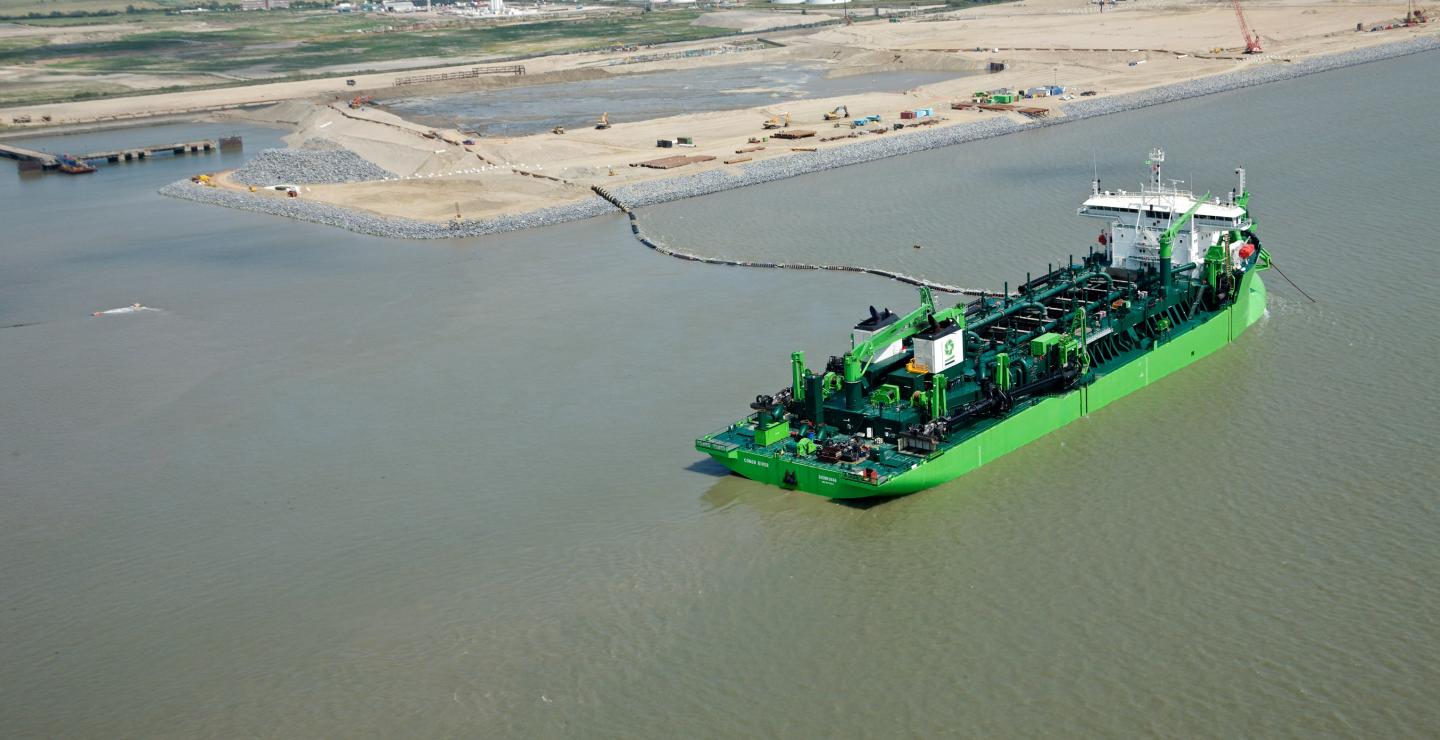
Challenge
- 30 mio m³dredged soil
- 3,000 mbund construction
- 200,000 m³slope protection
- 60,000 m²scour protection
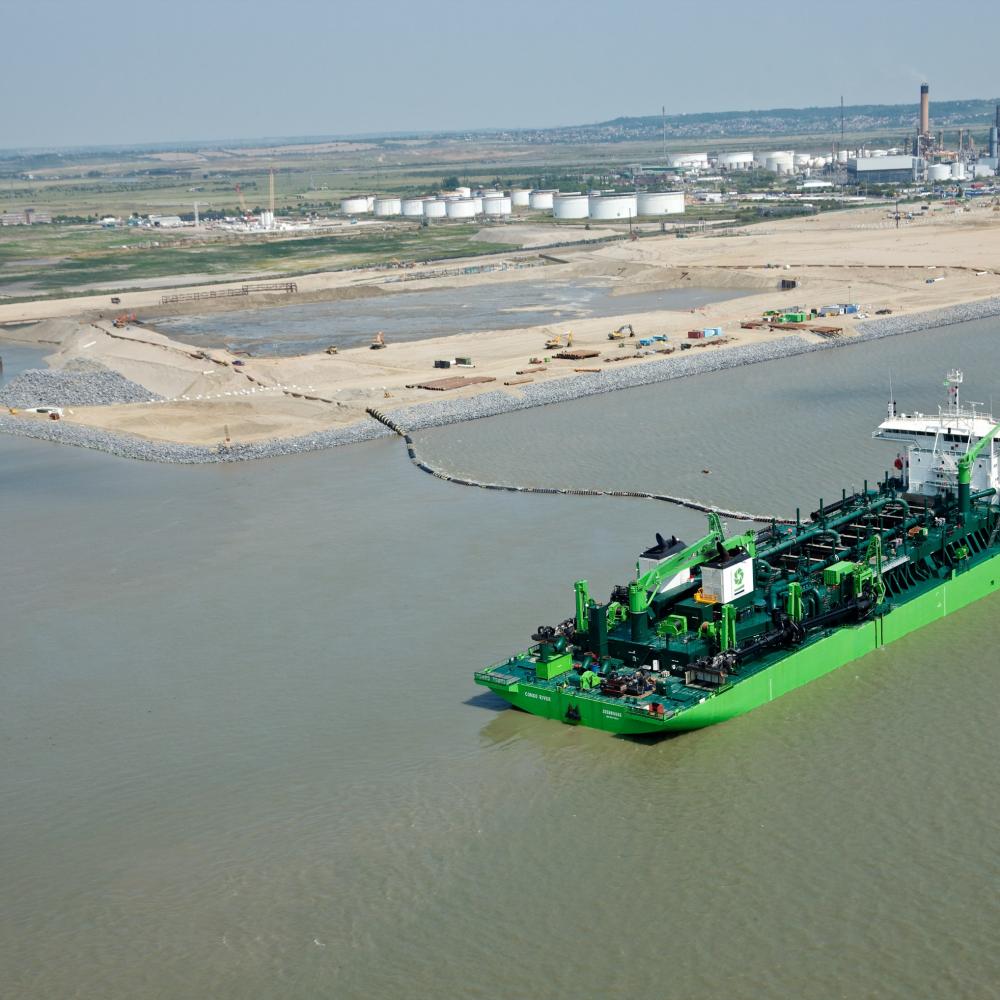
Solution
After an intensive period of preparation, including (but not limited to) soil investigations, setting up an impressive river monitoring system and obtaining all the required work permits, DEME started the actual dredging works in 2009. The dredging and reclamation activities included some 30 million m3 of capital dredging in the River Thames over a distance of approximately 100 km.
A substantial quantity of gravel was also dredged and commercialised, which was an interesting opportunity for our marine aggregates specialist DBM (DEME Building Materials. We performed many other hydraulic works such as the construction of bunds, slope protection and the installation of erosion protection by utilising Fibrous Open Stone Asphalt (FOSA) mattresses.
Used technology:
Furthermore, the project included a quay wall of 1,300 m and a new oil jetty of 300 m long. Given this highly complex and large-scale project, DEME teamed up with Laing O’Rourke, the largest privately-owned construction firm in the UK. Our marine experience was combined with their civil construction capabilities and the Joint Venture was responsible for the design, construction, testing, commissioning and the completion of all facilities and systems. Our main subcontractor for the construction of the quay wall was Bachy-Solétanche, a geotechnical specialist in the field of foundation and underground engineering.
Scope
All dredging, temporary bund construction and land reclamation associated with the construction of this new state of the art port. All marine activities required extensive environmental monitoring.
Dredging
Sections of the main deep-water navigation channel from the Outer Thames to the London Gateway Port development were of insufficient depth to provide suitable access for the large containerships, therefore it was necessary to dredge the access channel.
We were also required to provide a deep-water manoeuvring and berthing area at the port. We then used the dredged material for the areas that had to be reclaimed. Eventually we reclaimed approximately 92 ha of land from the river, south of the existing flood defence wall. Additionally, approximately 80 ha of existing land behind the flood defence wall was raised to provide a suitable platform for the construction of the port. Any excess material was commercialised or used for other construction activities.
Complex bund construction
We constructed cross bunds prior to the main reclamation works to reduce currents in the reclamation area, thereby limiting the outrun of fine material into the river and consequently, any environmental impact during the construction of the front bund and the reclamation. The front bund was partly a temporary bund to allow the construction of the quay wall and to protect the construction operation. We constructed the front bund from gravely material for the most part and a steeper slope on the outside with relatively finer material, and a flatter slope on the reclamation (inner) side. The front bund was constructed in three different vertical layers.
Quay wall construction
The construction of the first length of quay wall began when Stage 1 of the temporary bund construction and reclamation had attained its full design height and been compacted. The quay wall is a concrete diaphragm wall and involved the construction of a front and rear reinforced concrete wall. To construct the diaphragm wall, we built a temporary bund from dredged material south of the final quay line and protected it with temporary revetments. It was compacted using vibro-compaction.
Slope protection
We performed the construction of the front bunds above the water level and placed protection on the outer face as quickly as practicable to minimise losses from the exposed face. The temporary bund protection was installed on the front bund and the cross bund of Stage 1. The required design life for this erosion protection is only for a limited period. Essentially it protected the front bund until the construction of the diaphragm wall was completed, and it was removed after that. We carried out permanent bund protection on the Stage 2 front bund and (western) cross bund. This consisted of an armour rock layer and filter rock layer overlaying a geotextile.
Scour protection
We formed the berth pockets at the container quay by retaining walls, with the seabed providing passive earth pressure for the piles. Significant erosion of the seabed could compromise the wall’s stability, so scour protection was installed consisting of Fibrous Open Stone Asphalt (FOSA) mattresses.
Environmental monitoring
During (and prior to) the project execution the Joint Venture monitored the water quality parameters such as suspended solids concentrations, dissolved oxygen, salinity and temperature. This monitoring ensured that dredging and reclamation activities were effectively controlled; to determine natural variability and to confirm that any increases in these levels were within predicted limits.
Unexploded Ordnance
Unexploded ordnance (UXO) is known to be present in the River Thames following World War 2. As a result, all of the dredging operations in the access channel were subject to the strictest safety procedures for handling UXO.
